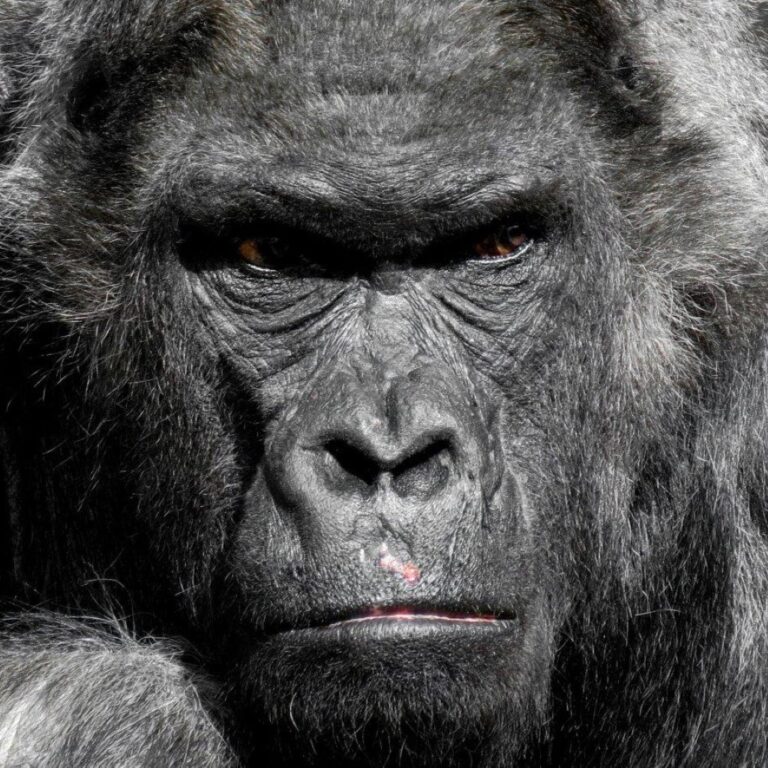Gorillas are the largest living primates, with adult males weighing up to 400 pounds or more and standing about 5 to 6 feet tall when upright.
There are two species of gorillas: the eastern gorilla and the western gorilla. Each species has two subspecies, including the critically endangered mountain gorilla and the western lowland gorilla.
Gorillas are herbivores, primarily feeding on leaves, stems, fruit, and bamboo. They have large, powerful jaws and teeth adapted to grinding tough plant material.
Gorillas live in family groups called troops or bands, which are typically led by a dominant male known as a silverback. The silverback is responsible for the safety and well-being of the group.
Gorillas are highly intelligent and have been observed using tools in the wild, such as sticks to gauge water depth or to help gather food.
The gestation period for a gorilla is about 8.5 months, and females usually give birth to one infant at a time. Baby gorillas are dependent on their mothers for several years.
Gorillas communicate using a wide range of vocalizations, gestures, and facial expressions. They can convey emotions such as happiness, anger, and fear through their body language and sounds.
Gorillas are mostly peaceful animals and will only display aggression when they feel threatened. The famous chest-beating display by silverbacks is often a way to show dominance or ward off potential threats.
Despite their size, gorillas are capable of moving quickly and can run on all fours at speeds of up to 20 miles per hour over short distances.
Gorillas are known for their strong social bonds, particularly between mothers and their offspring. These bonds are crucial for the survival and development of young gorillas.
Gorillas have a lifespan of about 35 to 40 years in the wild, though they can live longer in captivity. Their lifespan depends on factors such as diet, environment, and protection from threats.
Mountain gorillas live at high altitudes in the mountains of Rwanda, Uganda, and the Democratic Republic of the Congo. They are adapted to cold temperatures and can be found at elevations of up to 13,000 feet.
Gorillas are susceptible to many of the same diseases as humans, including the common cold, which can be deadly to them due to their lack of immunity to human pathogens.
Conservation efforts are critical for the survival of gorillas, as they face threats from habitat loss, poaching, and diseases. Protecting their natural habitats and reducing human-wildlife conflict are essential for their conservation.
Gorillas share about 98% of their DNA with humans, making them one of our closest relatives in the animal kingdom. This genetic similarity is one of the reasons they are so important to study and protect.


